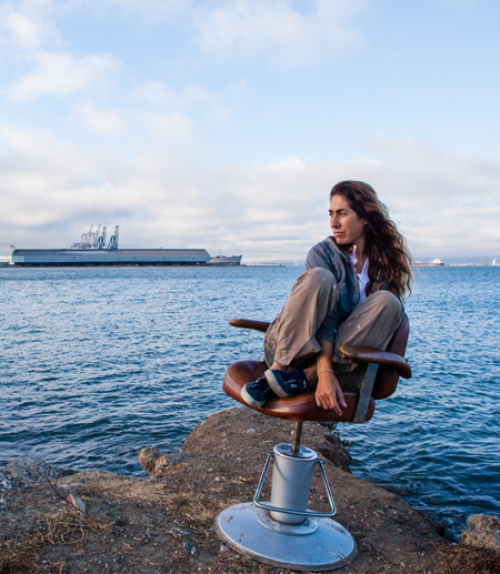Ana Teresa Fernández, an artist whose public art, paintings, and films explore the intersections of geopolitical borders and boundaries of identity will visit campus April 25 for a lecture, “Magic Informalism: [re]drawing solutions to alternative truths.”
Her visit was coordinated by Ella Diaz, assistant professor of English, Latina/o studies and American studies, and is a part of Diaz’s Spring 2018 Urban Representation Lab, “Building Feelings / Feeling Buildings: Mapping Urban Memory in an Ahistorical Age.” The April 25 lecture will be at 4:30 p.m. in Room 120 of the Physical Sciences Building. It is free and open to the public.
“Ana Teresa and I were colleagues for several years at the San Francisco Art Institute (SFAI) prior to my coming to Cornell,” Diaz said, adding that Fernández visted Cornell in 2012 at Diaz’s invitation and to discuss “Borrando la Frontera/Erasing the Border,” an ongoing and site-specifc work in which Fernández and a team of collaborators “removed” part of the border fence through strategic painting, creating a seamless blue sky for viewers at a distance from the fence between Mexico and the U.S. With widespread coverage of this installation, in addition to Fernández’s recent works including “Erasure” (2015), Diaz remarked, “This is a great opportunity to have her visit again and to think about her work at a similar distance.”
Fernández works in oil painting, video installations, social sculpture—which is exemplified in “Borrando La Frontera,” and mixed media. She does so to “illuminate and push the barriers that confine human beings to sociopolitical and, often, national, categories of gender, race, and class,” Diaz said. She won the “Best of the Bay” award by 7X7 Magazine for a large-scale public art project in San Francisco and her films have been screened at festivals across the world.
Fernández has exhibited her artwork at the Denver Art Museum, the Nevada Museum of Art of Reno, Arizona State University Art Museum in Phoenix, the Grunwald Gallery at Indiana University in Bloomington, Humboldt State University in Eureka, CA, the Tijuana Biennial, Tijuana, MX, the Snite Museum at University Notre Dame University, the Yerba Buena Center for the Arts in San Francisco, and the Oakland Art Museum in Oakland, CA.
This lecture is sponsored by the Mellon Collaborative Studies in Architecture, Urbanism, and the Humanities through the Andrew W. Mellon Foundation, the Latina/o Studies Program, American Studies Program, the Society for the Humanities, the Department of English,and the College of Architecture, Art and Planning.
This article also appeared in the Cornell Chronicle.




